How is Technology Changing the Face of Waste Management?
In today's fast-paced world, technology is not just a convenience; it's a necessity, especially in the realm of waste management. The way we handle waste is evolving rapidly, thanks to innovative technologies that are reshaping our approach to sustainability. Imagine a future where garbage collection is as efficient as ordering a pizza online, where recycling is a seamless part of our daily routines, and where communities are actively engaged in reducing waste. This article delves into the transformative impact of technology on waste management, highlighting innovations that enhance efficiency, sustainability, and community engagement in managing waste effectively.
One of the most exciting advancements in waste management is the implementation of smart waste collection systems. These systems utilize sensors and Internet of Things (IoT) technology to optimize collection routes, which not only reduces operational costs but also minimizes environmental impact. Imagine a fleet of garbage trucks that can communicate with each other and adjust their routes based on real-time data about bin fullness and traffic conditions. This data-driven decision-making leads to fewer emissions and less fuel consumption, making waste collection smarter and greener.
Recycling is a critical component of waste management, and recent innovations are significantly improving its effectiveness. Automated sorting systems and advanced materials recovery facilities are at the forefront of these changes. These technologies enhance recycling rates and reduce contamination in recyclable materials, ensuring that more waste is diverted from landfills. The result? A cleaner environment and a more sustainable future.
Artificial Intelligence (AI) is revolutionizing the way we sort waste. With AI-powered systems, machines can identify and separate recyclables from regular waste with incredible accuracy. This not only speeds up the sorting process but also reduces the chances of human error. Picture a robotic arm that can recognize a plastic bottle from a pile of mixed waste faster than any human worker could. This level of efficiency is game-changing for recycling operations.
Machine learning algorithms take this a step further by analyzing waste patterns over time. By learning from historical data, these algorithms can adapt to changes in waste composition, leading to improved resource recovery. For instance, if a community starts using more biodegradable materials, the system can adjust its sorting techniques accordingly, ensuring that less valuable resources are lost.
Robotic sorting systems equipped with AI can operate continuously, increasing throughput and reducing labor costs. This means that facilities can handle larger volumes of waste without compromising on accuracy. The future of waste sorting is not just about efficiency; it's also about creating a safer working environment for human workers by reducing their exposure to potentially hazardous materials.
Another groundbreaking technology making waves in waste management is blockchain. This technology enhances transparency by providing a secure and immutable record of waste disposal and recycling activities. Imagine being able to track the journey of your waste from your home to its final destination, fostering accountability among all stakeholders involved. This level of transparency can help build trust within communities and encourage more responsible waste disposal practices.
As we look for ways to reduce landfill use, waste-to-energy technologies are emerging as a viable solution. These technologies convert non-recyclable waste into usable energy, contributing to a circular economy. By transforming waste into energy, we not only reduce the amount of waste that ends up in landfills but also generate renewable energy that can power our homes and businesses.
Modern incineration technologies have evolved significantly, becoming more efficient and environmentally friendly. Today's incinerators are designed to minimize emissions while maximizing energy recovery. This means that we can safely dispose of waste while generating energy, creating a win-win situation for both waste management and energy production.
Gasification processes offer another sustainable solution by converting organic materials into syngas, which can be used for electricity generation. This method not only helps in waste disposal but also provides a renewable source of energy, making it a critical component of our transition towards sustainable waste management practices.
Technology-driven community engagement platforms play a vital role in encouraging public participation in waste management initiatives. By promoting recycling and responsible waste disposal through education and incentives, these platforms foster a culture of sustainability. Imagine a community where everyone is informed and motivated to reduce waste, thanks to accessible information and engaging campaigns.
Mobile applications are revolutionizing how we approach waste management. These apps provide users with information on local recycling guidelines, collection schedules, and waste reduction tips. By making this information readily available, communities can foster a culture of sustainability and encourage responsible waste disposal practices.
Social media campaigns are another powerful tool for raising awareness about waste management issues. These campaigns can create a collective effort toward reducing waste and promoting recycling, turning individual actions into a community movement. With the right messaging and engagement, social media can inspire change and drive participation in waste management initiatives.
Data analytics plays a pivotal role in waste management by providing insights into waste generation patterns. This information helps cities and organizations make informed decisions to optimize waste strategies. By analyzing data, waste management teams can identify trends, allocate resources effectively, and improve overall efficiency.
Predictive analytics can forecast waste generation trends, enabling better resource allocation and planning for waste collection and processing. By anticipating future needs, cities can ensure that they are prepared for changes in waste volume, leading to more efficient operations.
Establishing performance metrics allows waste management organizations to assess the effectiveness of their programs. By measuring outcomes, they can make necessary adjustments to improve results, ensuring that their waste management strategies are continually evolving and improving.
- What is smart waste collection? - Smart waste collection utilizes IoT technology to optimize garbage collection routes and reduce costs.
- How does AI improve waste sorting? - AI enhances sorting accuracy by identifying recyclables faster and more efficiently than humans.
- What are waste-to-energy technologies? - These technologies convert non-recyclable waste into usable energy, reducing landfill use.
- How can communities engage in waste management? - Through mobile apps and social media campaigns, communities can participate in recycling and waste reduction efforts.
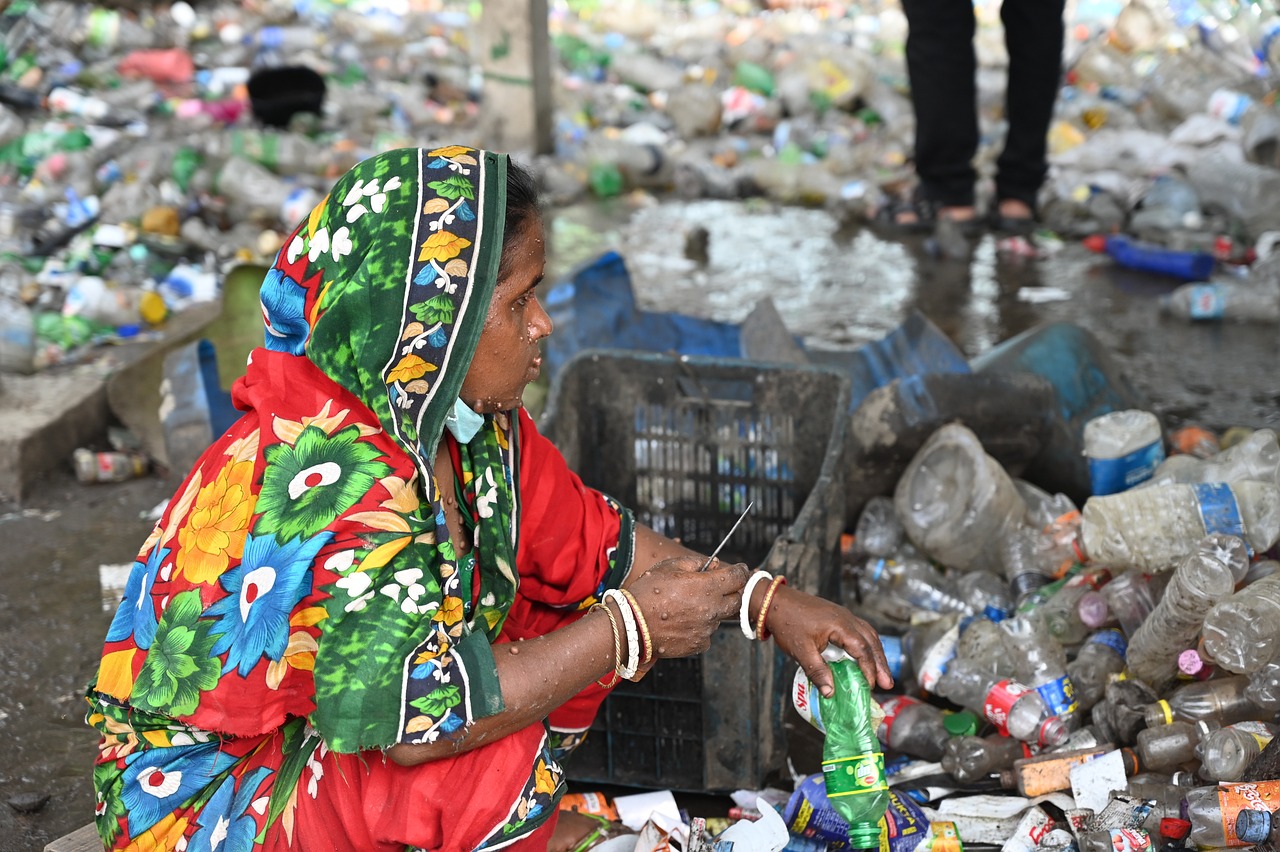
Smart Waste Collection
In the age of rapid technological advancement, waste management is undergoing a significant transformation, particularly through the advent of systems. These innovative solutions harness the power of Internet of Things (IoT) technology and advanced sensors to revolutionize how cities and communities manage their waste. Imagine a world where garbage trucks don’t just follow a set route but instead adjust their paths based on real-time data. This is no longer a distant dream; it’s happening now!
Smart waste collection systems utilize sensors placed in waste bins to monitor their fill levels. This data is then transmitted to centralized management systems, allowing waste operators to optimize collection routes and schedules. By analyzing this information, cities can reduce unnecessary trips, lower fuel consumption, and ultimately cut down on operational costs. The environmental benefits are equally impressive; fewer trucks on the road mean reduced emissions and a smaller carbon footprint.
One of the key benefits of smart waste collection is the ability to implement data-driven decision-making. For instance, if a particular area generates more waste than usual—perhaps due to a local event—waste managers can quickly adjust their collection strategies to address this spike. Furthermore, these systems can also predict trends in waste generation, allowing for proactive measures rather than reactive ones.
To give you a clearer picture, let’s take a look at a simple table that illustrates the benefits of smart waste collection:
| Benefits | Description |
|---|---|
| Cost Efficiency | Reduces operational costs through optimized routes and schedules. |
| Environmental Impact | Minimizes emissions by reducing the number of collection trips. |
| Real-time Monitoring | Allows for immediate adjustments based on waste levels and trends. |
| Enhanced Community Engagement | Improves public awareness and participation in waste management initiatives. |
Moreover, the integration of smart waste collection systems encourages community engagement. With the help of mobile applications, residents can receive notifications about collection schedules and even report overflowing bins. This two-way communication fosters a sense of responsibility and involvement among community members. When people feel like they have a stake in their environment, they are more likely to participate actively in keeping it clean and sustainable.
In conclusion, smart waste collection represents a significant leap forward in the quest for efficient waste management. By leveraging technology, we can create cleaner, healthier environments while also paving the way for sustainable urban development. As cities continue to adopt these systems, we can expect to see a more responsive and responsible approach to managing waste, ultimately benefiting both the planet and its inhabitants.

Recycling Innovations
In recent years, the landscape of recycling has undergone a significant transformation, thanks to groundbreaking innovations in technology. These advancements not only enhance the efficiency of recycling processes but also play a crucial role in minimizing contamination and improving overall recycling rates. Imagine a world where waste is not just discarded, but transformed into valuable resources through smart technology. This vision is becoming a reality as automated sorting systems and advanced materials recovery facilities revolutionize the way we approach recycling.
At the heart of these innovations are automated sorting systems, which utilize sophisticated machinery to identify and separate different materials with remarkable precision. These systems are equipped with sensors and cameras that analyze the composition of waste, allowing them to sort recyclables from non-recyclables more accurately than ever before. The result? A significant reduction in contamination rates, which has long been a challenge in the recycling industry. By ensuring that only clean, recyclable materials enter the recycling stream, these technologies are paving the way for a more sustainable future.
One of the most exciting developments in recycling technology is the integration of artificial intelligence (AI). AI plays a pivotal role in enhancing waste sorting accuracy, enabling machines to analyze waste in real-time. This capability means that AI systems can learn from their environment, adapting to changes in waste composition over time. For instance, as consumer habits evolve and new materials enter the market, AI can adjust its sorting algorithms, ensuring that the recycling process remains efficient and effective.
Machine learning algorithms are a vital component of this AI-driven revolution. By analyzing vast amounts of data related to waste patterns, these algorithms continually improve sorting processes. They can recognize trends and anomalies, allowing for proactive adjustments to be made in the recycling system. This adaptability not only enhances the accuracy of sorting but also optimizes resource recovery, reducing the amount of waste that ends up in landfills.
In addition to AI and machine learning, robotic sorting systems are making waves in the recycling industry. These robots, equipped with advanced AI, can operate continuously, tirelessly sorting through waste at impressive speeds. This not only increases throughput but also reduces labor costs, making recycling operations more economically viable. With the ability to identify and separate various materials—such as plastics, metals, and paper—robotic systems are ensuring a higher accuracy rate in recycling, which is crucial for meeting growing environmental standards.
Another innovative approach gaining traction in recycling is the use of blockchain technology. This technology enhances transparency in waste management by providing a secure and immutable record of waste disposal and recycling activities. Imagine being able to trace the journey of recyclable materials from the moment they are collected to their final processing. This level of transparency fosters accountability among stakeholders, ensuring that everyone involved in the recycling process adheres to best practices.
In summary, the innovations in recycling technology are not just about making the process more efficient; they are about creating a sustainable future where waste is viewed as a resource rather than a burden. With advancements in automated sorting, AI, robotic systems, and blockchain technology, we are witnessing a paradigm shift in how we manage waste. As these technologies continue to evolve, they hold the promise of transforming our recycling systems into models of efficiency and sustainability.
- What are automated sorting systems? Automated sorting systems use advanced technology to identify and separate recyclable materials from waste, improving efficiency and reducing contamination.
- How does AI improve recycling? AI enhances recycling by analyzing waste in real-time, learning from its environment, and adapting sorting processes to ensure higher accuracy.
- What role do robotic sorting systems play in recycling? Robotic sorting systems operate continuously to sort waste at high speeds, increasing throughput and reducing labor costs while ensuring accuracy.
- How does blockchain enhance transparency in waste management? Blockchain provides a secure and immutable record of waste disposal and recycling activities, fostering accountability among stakeholders.
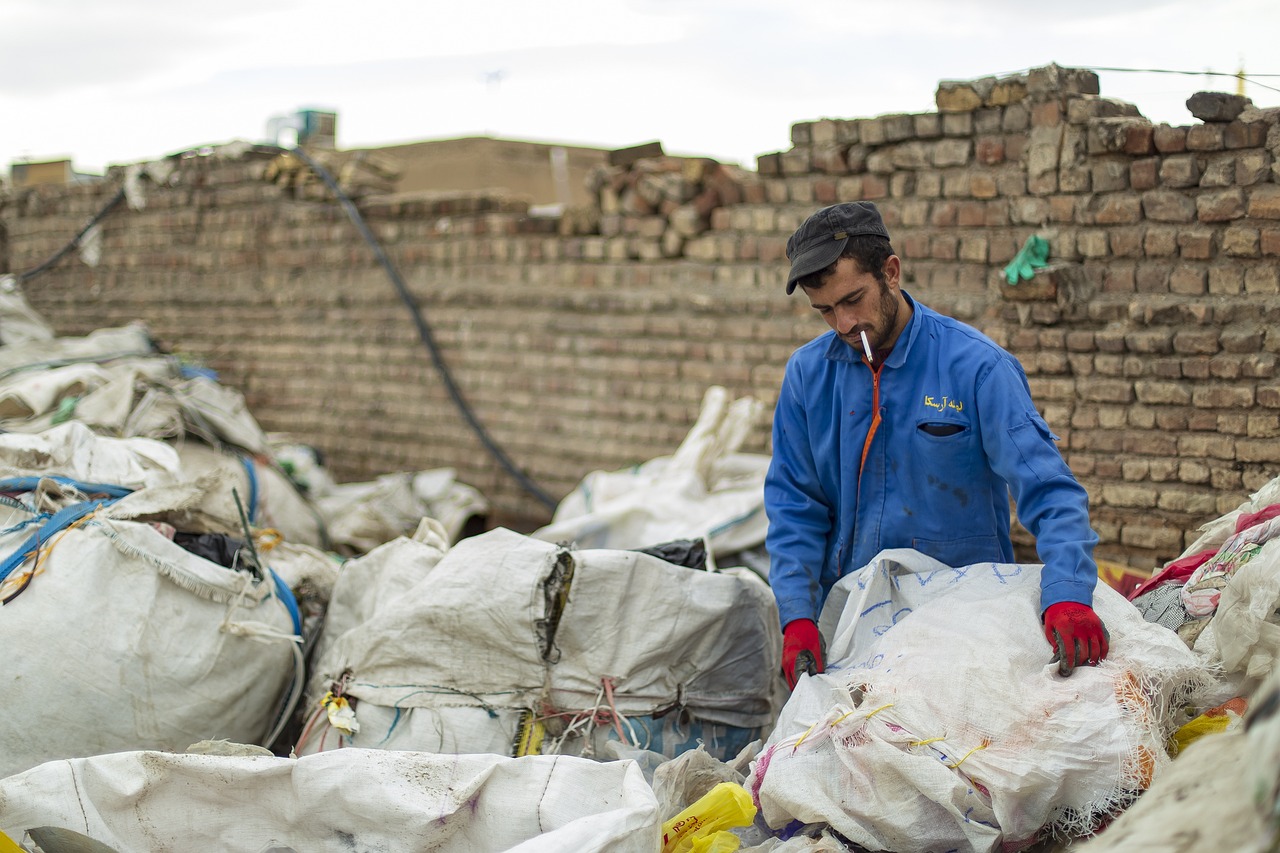
AI in Waste Sorting
Artificial Intelligence (AI) is revolutionizing the way we approach waste management, particularly in the area of waste sorting. Imagine a world where machines can identify and separate recyclables from trash with a precision that surpasses human capabilities. This is not just a dream; it's becoming a reality thanks to the advancements in AI technology. By employing sophisticated algorithms and machine learning techniques, AI systems can analyze the composition of waste in real-time, making sorting processes faster and more efficient.
One of the most remarkable aspects of AI in waste sorting is its ability to learn and adapt. As these systems process more data, they refine their sorting techniques, becoming increasingly accurate over time. This is akin to a student who, through continuous practice and feedback, becomes a master in their subject. In waste management, this means that the more waste the AI sorts, the better it gets at identifying various materials, reducing contamination rates in recycling streams.
Furthermore, AI can be integrated with robotic sorting systems, creating a powerful duo that operates continuously without the fatigue or errors that human workers might experience. These robots are equipped with advanced sensors and cameras that enable them to detect different types of materials, such as plastics, metals, and paper. As a result, they can sort waste at an impressive speed, significantly increasing the throughput of recycling facilities. For example, while a human worker might sort a few dozen items per minute, an AI-driven robot can handle hundreds, if not thousands, in the same timeframe.
To illustrate the impact of AI in waste sorting, consider the following table that compares traditional sorting methods with AI-enhanced systems:
| Aspect | Traditional Sorting | AI-Enhanced Sorting |
|---|---|---|
| Speed | Low (dozens of items/minute) | High (hundreds to thousands of items/minute) |
| Accuracy | Variable (prone to human error) | High (consistent and precise) |
| Adaptability | Static (limited learning) | Dynamic (learns from data) |
| Labor Costs | High (requires multiple workers) | Lower (fewer workers needed) |
As we delve deeper into the realm of AI in waste sorting, we can’t overlook the environmental benefits it brings. By improving the accuracy of sorting, we not only increase recycling rates but also reduce the amount of waste sent to landfills. This is crucial as landfills are a significant source of greenhouse gas emissions, contributing to climate change. With AI, we are not just making waste management more efficient; we are also taking a giant leap towards a more sustainable future.
In conclusion, the integration of AI in waste sorting is a game-changer for the industry. It enhances efficiency, reduces costs, and promotes environmental sustainability. As technology continues to evolve, we can expect even more innovative solutions that will further transform the landscape of waste management.
- What is AI in waste sorting? AI in waste sorting refers to the use of artificial intelligence technologies to enhance the accuracy and efficiency of separating recyclable materials from waste.
- How does AI improve recycling rates? By increasing the speed and precision of sorting processes, AI reduces contamination in recycling streams, leading to higher recycling rates.
- Are robotic sorting systems effective? Yes, robotic sorting systems equipped with AI can sort waste much faster and more accurately than human workers, significantly improving operational efficiency.

Machine Learning Algorithms
When it comes to revolutionizing waste management, are the unsung heroes working tirelessly behind the scenes. Imagine having a smart assistant that not only learns your preferences but also adapts to your changing needs over time. That's precisely what these algorithms do in the realm of waste sorting. They analyze vast amounts of data related to waste composition and generation patterns, allowing them to enhance sorting processes significantly. By identifying trends and anomalies, these algorithms can optimize the sorting machinery to improve efficiency and accuracy.
One of the most fascinating aspects of machine learning in waste management is its ability to evolve. Just like how we learn from our experiences, these algorithms refine their sorting techniques based on historical data. For instance, if a particular type of recyclable material becomes more prevalent in the waste stream, the algorithm will adjust its sorting parameters to ensure that this material is processed correctly. This adaptability leads to better recovery rates, which is crucial for promoting sustainability.
Moreover, machine learning algorithms can be integrated with real-time data analytics. This means that as waste is collected and processed, the algorithms are continuously receiving feedback. They can detect changes in the waste stream, such as seasonal fluctuations or changes in consumer behavior, and adjust operations accordingly. This dynamic response is akin to having a responsive traffic system that adapts to real-time conditions, ensuring smooth and efficient operations.
Another exciting development is the potential for machine learning to reduce contamination in recyclable materials. Contaminants can severely hamper recycling efforts, leading to increased costs and reduced quality of recycled products. By employing advanced machine learning techniques, waste sorting facilities can identify and isolate contaminants more effectively than ever before. This not only improves the quality of the recyclables but also enhances the overall efficiency of the recycling process.
To truly grasp the impact of machine learning algorithms in waste management, consider the following table that outlines key benefits:
| Benefit | Description |
|---|---|
| Improved Accuracy | Machine learning algorithms can identify and categorize waste with higher precision than traditional methods. |
| Adaptive Learning | Algorithms evolve over time, improving sorting processes based on changing waste patterns. |
| Cost Efficiency | Reducing contamination and optimizing sorting can lead to significant cost savings for waste management companies. |
| Real-Time Adjustments | Algorithms can respond to real-time data, enhancing operational efficiency. |
In conclusion, machine learning algorithms are not just a technological trend; they are a game-changer in the waste management industry. By harnessing the power of data, these algorithms are paving the way for a more efficient, sustainable, and responsible approach to waste disposal and recycling. As we continue to innovate and integrate these technologies, the future of waste management looks brighter than ever.
- What are machine learning algorithms?
Machine learning algorithms are computational models that learn from data to make predictions or decisions without being explicitly programmed for specific tasks.
- How do machine learning algorithms improve waste sorting?
They analyze historical data to identify patterns and optimize sorting processes, leading to increased accuracy and efficiency.
- Can machine learning reduce contamination in recyclables?
Yes, by accurately identifying and separating contaminants from recyclables, machine learning enhances the quality of recycled materials.
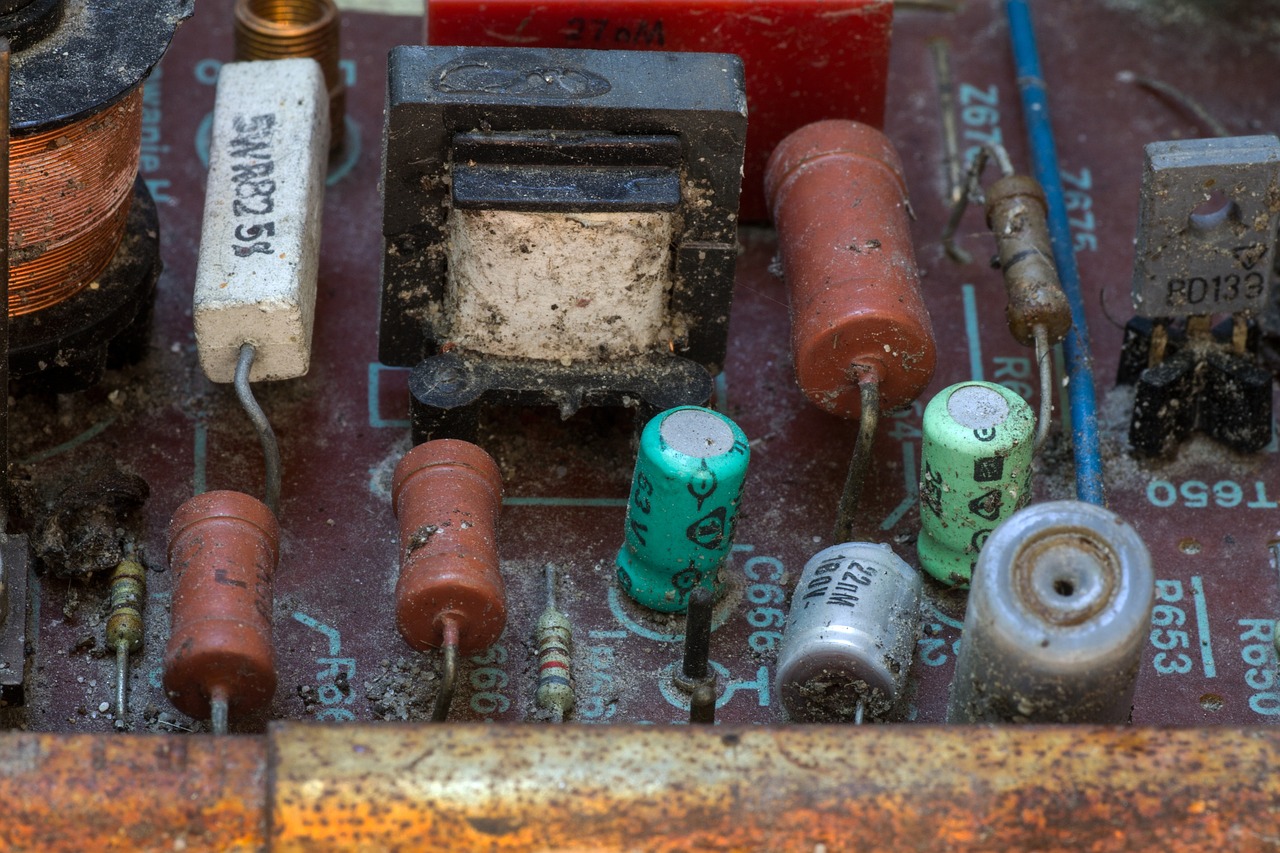
Robotic Sorting Systems
In the ever-evolving landscape of waste management, have emerged as a game-changer, revolutionizing how we handle recyclables. Imagine a world where machines, equipped with cutting-edge technology, can work tirelessly to separate different materials with precision and speed. These systems are not just a futuristic vision; they are a reality that is reshaping the industry. With the integration of artificial intelligence and machine learning, robotic systems are capable of identifying various types of waste—plastic, metal, glass, and more—at an astonishing rate.
One of the standout features of robotic sorting systems is their ability to operate continuously without the fatigue that human workers might experience. This leads to increased throughput, meaning more waste can be processed in less time. For instance, while a human worker might sort through a ton of waste in a day, a robotic system can accomplish the same task in a fraction of that time. This efficiency not only boosts productivity but also significantly reduces labor costs, allowing companies to allocate resources more effectively.
Moreover, the accuracy of these systems is remarkable. Traditional sorting methods can often lead to contamination of recyclable materials, which is a major hurdle in the recycling process. Contamination can reduce the quality of recycled products and increase costs, ultimately impacting the environment. Robotic sorting systems, however, utilize advanced sensors and cameras to detect materials with high precision. They can differentiate between similar-looking items, ensuring that only the right materials make it to the recycling stream. This capability is crucial for enhancing recycling rates and ensuring that valuable resources are not lost in the waste stream.
To illustrate the impact of robotic sorting systems, consider the following table that highlights some key benefits:
| Benefit | Description |
|---|---|
| Increased Efficiency | Robotic systems can process waste faster than human workers, improving overall throughput. |
| Cost Reduction | Lower labor costs and reduced contamination lead to significant savings for waste management companies. |
| Enhanced Accuracy | Advanced sensors ensure precise sorting, minimizing contamination and improving recycling quality. |
| Continuous Operation | Robots can work 24/7 without fatigue, maximizing operational hours and output. |
As we look toward the future, the role of robotic sorting systems in waste management will only continue to grow. These systems are not just about efficiency; they represent a shift towards a more sustainable approach to handling waste. By embracing technology, we can create a cleaner, greener planet. In a world where every action counts, investing in robotic sorting systems is an investment in our future. So, the next time you throw something away, remember that behind the scenes, advanced technology is working hard to ensure that as much as possible is recycled and reused.
- What are robotic sorting systems?
Robotic sorting systems are automated machines that use artificial intelligence and advanced sensors to sort waste materials efficiently.
- How do robotic sorting systems improve recycling rates?
These systems enhance recycling rates by accurately identifying and separating recyclable materials, reducing contamination.
- Are robotic sorting systems cost-effective?
Yes, they reduce labor costs and improve efficiency, leading to significant savings for waste management companies.
- Can robotic sorting systems operate continuously?
Absolutely! Unlike human workers, robotic systems can function 24/7 without fatigue, maximizing productivity.
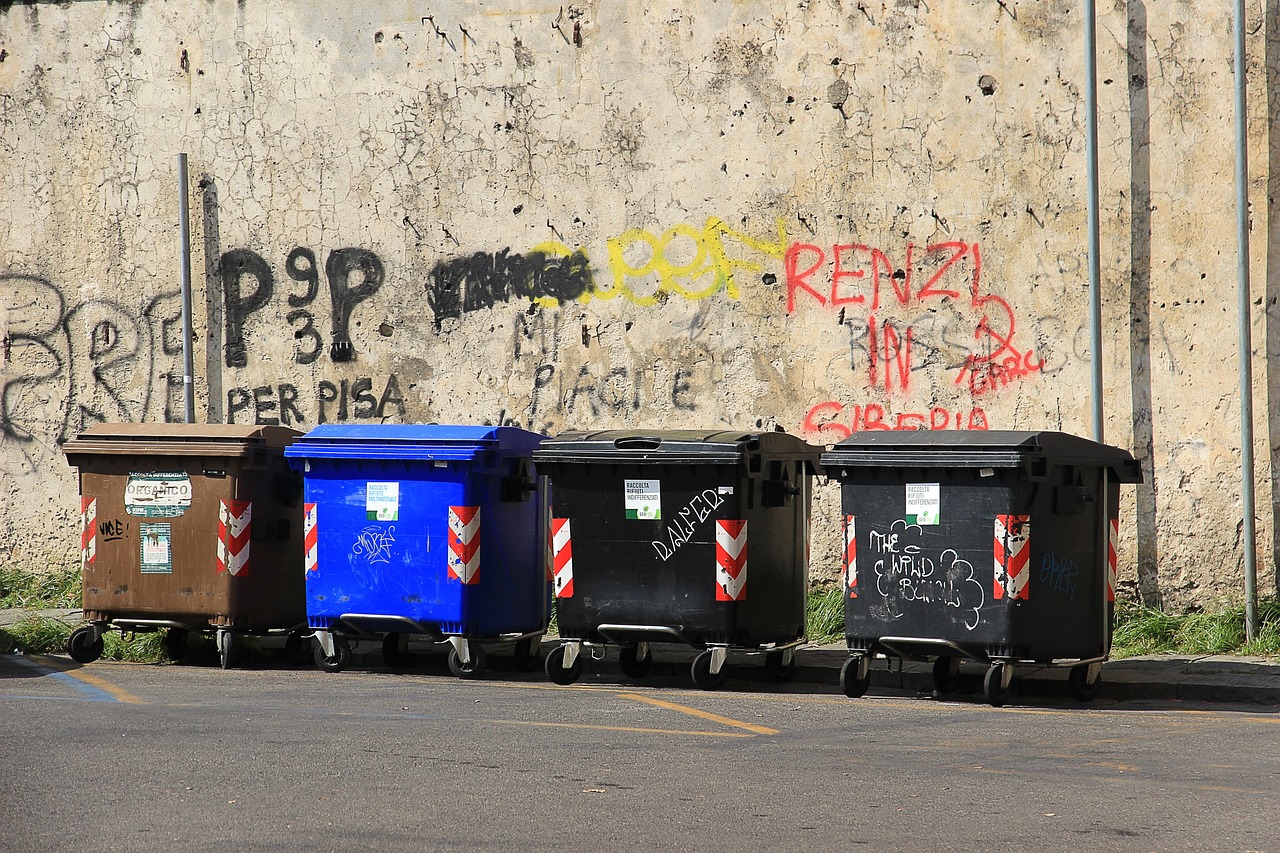
Blockchain for Transparency
In the ever-evolving landscape of waste management, blockchain technology emerges as a powerful ally, promoting greater transparency and accountability. Imagine a digital ledger that records every transaction related to waste disposal and recycling—this is precisely what blockchain offers. With its decentralized nature, it provides a secure and immutable record that stakeholders can trust. This innovation not only enhances operational efficiency but also builds confidence among the public.
One of the most significant benefits of blockchain in waste management is its ability to track the lifecycle of waste from its generation to its final disposal. For instance, when waste is collected, each transaction can be logged, detailing the type of waste, the quantity, and the method of disposal. This data is then accessible to all parties involved, including waste management companies, local governments, and even the public. Such transparency ensures that everyone is held accountable for their waste management practices.
Moreover, blockchain can facilitate the verification of recycling efforts. When recyclable materials are processed, the data can be recorded on the blockchain, providing a clear trail that verifies the recycling process. This capability is crucial in combating the issue of greenwashing, where companies falsely claim to be environmentally friendly. With blockchain, consumers can verify the authenticity of a company's recycling claims, fostering trust and encouraging responsible practices.
To illustrate the impact of blockchain on transparency in waste management, consider the following table:
| Aspect | Traditional Waste Management | Blockchain-Enabled Waste Management |
|---|---|---|
| Data Accessibility | Limited access to disposal records | Real-time access for all stakeholders |
| Accountability | Difficult to trace responsibility | Clear trail of transactions and responsibility |
| Fraud Prevention | High risk of manipulation | Immutable records reduce fraud risk |
| Consumer Trust | Low due to lack of transparency | High due to verifiable data |
In summary, the integration of blockchain technology into waste management practices not only enhances transparency but also promotes a culture of accountability among all stakeholders. As communities strive for sustainable waste management solutions, embracing blockchain could be a game-changer, ensuring that everyone plays their part in protecting our environment.
- What is blockchain technology? Blockchain is a decentralized digital ledger that securely records transactions across multiple computers, making it nearly impossible to alter or hack the data.
- How does blockchain improve waste management? It enhances transparency by providing an immutable record of waste disposal and recycling activities, fostering accountability among stakeholders.
- Can blockchain help reduce fraud in waste management? Yes, its immutable nature significantly reduces the risk of fraud and manipulation of waste disposal records.
- Is blockchain technology widely adopted in waste management? While still emerging, blockchain is gaining traction as more organizations recognize its potential to improve transparency and efficiency.
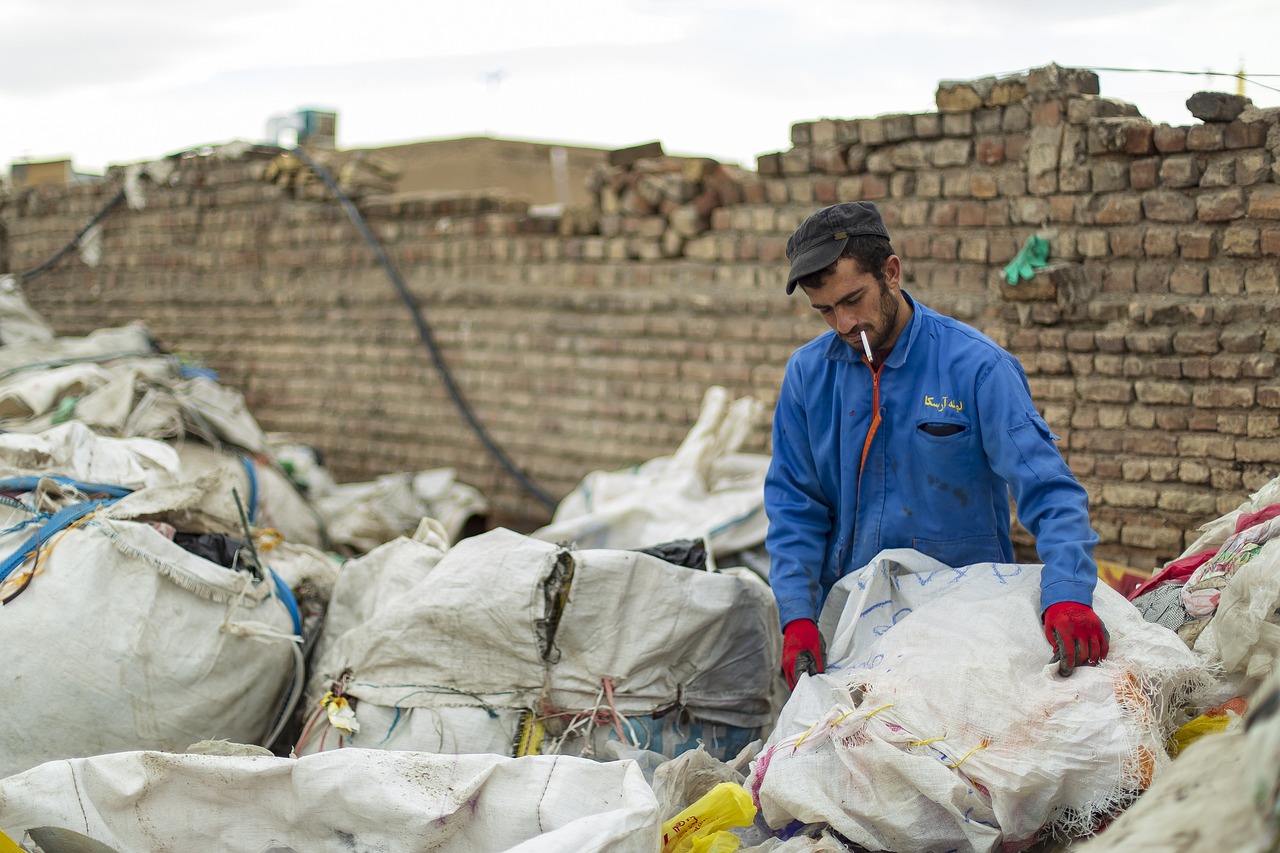
Waste-to-Energy Technologies
Waste-to-energy technologies are revolutionizing the way we think about waste disposal and energy production. Instead of viewing waste as merely a problem to be managed, these innovative solutions allow us to transform non-recyclable waste into valuable energy resources. This shift not only reduces the amount of waste that ends up in landfills but also contributes to a more sustainable and circular economy. Imagine turning trash into treasure—this is the essence of waste-to-energy technologies!
One of the most significant advantages of waste-to-energy technologies is their ability to minimize landfill use. Landfills are not just unsightly; they also pose environmental risks such as soil and groundwater contamination. In contrast, waste-to-energy facilities convert waste into energy through various processes, thus significantly reducing the volume of waste that needs to be disposed of. This not only alleviates the pressure on landfills but also generates renewable energy, which can be harnessed for electricity generation or heating.
Among the various waste-to-energy technologies, **incineration** and **gasification** stand out as the most prominent methods. Modern incineration technologies have evolved to become more efficient and environmentally friendly. They now incorporate advanced air pollution control systems that drastically reduce emissions compared to older incineration methods. This means that waste can be burned to produce energy while minimizing the environmental footprint. Thanks to these advancements, modern incineration facilities can recover energy from waste effectively, making them a viable option for energy generation.
On the other hand, gasification processes offer another sustainable approach to waste management. In gasification, organic materials are subjected to high temperatures in an oxygen-limited environment, resulting in the production of syngas. This syngas can be used for electricity generation or further processed into fuels, providing a clean energy source. The beauty of gasification lies in its ability to handle various types of waste, including agricultural residues and municipal solid waste, making it a flexible option for energy production.
As we embrace these technologies, it's essential to understand their potential impact on our communities and the environment. Waste-to-energy technologies not only help in waste reduction but also contribute to energy independence by providing a local source of renewable energy. This is particularly important in a world where energy demands are continuously rising.
| Technology | Process | Benefits |
|---|---|---|
| Incineration | Burning waste to generate heat and electricity | Reduces landfill waste, generates energy, and minimizes emissions |
| Gasification | Converting organic materials into syngas through high-temperature processes | Produces clean energy, flexible in handling various waste types |
In conclusion, waste-to-energy technologies represent a significant leap forward in our approach to waste management and energy production. By harnessing the potential of waste, we can create a cleaner, more sustainable future. As communities continue to adopt these technologies, we move closer to achieving a circular economy where waste is not just discarded but transformed into valuable resources.
- What is waste-to-energy technology? Waste-to-energy technology refers to processes that convert non-recyclable waste materials into usable forms of energy, such as electricity or heat.
- How does incineration work? Incineration involves burning waste at high temperatures to generate heat, which can then be used to produce electricity.
- What are the environmental impacts of gasification? Gasification produces fewer emissions compared to traditional waste disposal methods and can convert waste into cleaner energy forms.
- Can all types of waste be used in waste-to-energy technologies? While many types of waste can be processed, non-recyclable materials are generally the focus for waste-to-energy technologies.

Incineration Advances
In recent years, incineration technologies have undergone a remarkable transformation, evolving into a more efficient and environmentally friendly method of waste disposal. Gone are the days when incineration was viewed solely as a means of burning waste; modern advancements have turned it into a sophisticated process that not only reduces the volume of waste but also recovers energy from it. This shift is crucial as we face the growing challenge of waste management in an era marked by increasing urbanization and consumption.
One of the key advancements in incineration technology is the development of high-efficiency combustion systems. These systems are designed to operate at higher temperatures, ensuring that waste is burned more completely. This not only minimizes the amount of residual ash produced but also significantly reduces harmful emissions. For instance, state-of-the-art facilities now utilize advanced flue gas cleaning systems that capture pollutants before they can escape into the atmosphere, ensuring compliance with stringent environmental regulations.
Moreover, the integration of energy recovery systems has made incineration a viable source of renewable energy. By harnessing the heat generated during the combustion process, facilities can produce steam that drives turbines to generate electricity. This process not only contributes to the energy grid but also offsets the reliance on fossil fuels, making it a more sustainable option. According to recent studies, facilities that employ these energy recovery techniques can convert up to 90% of the energy content of waste into usable energy.
In addition to these technological improvements, the overall design of incineration plants has evolved. Modern facilities are now built with modular designs that allow for easier scaling and adaptation to local waste management needs. This flexibility means that smaller communities can benefit from incineration technology without the need for large-scale investments, making it accessible to a wider range of municipalities.
Furthermore, the use of real-time monitoring systems has become increasingly prevalent in incineration facilities. These systems provide operators with immediate feedback on combustion efficiency and emissions, allowing for quick adjustments to optimize performance. This proactive approach not only enhances operational efficiency but also builds public trust by ensuring transparency in waste management practices.
In summary, the advances in incineration technology represent a significant leap forward in waste management. By combining efficiency, environmental responsibility, and energy recovery, modern incineration facilities are not just waste disposal sites, but rather, they are becoming integral components of a sustainable waste management ecosystem. As we continue to innovate and improve these technologies, the future of incineration looks promising, paving the way for a cleaner and more sustainable world.
- What is the main benefit of modern incineration technologies?
Modern incineration technologies significantly reduce waste volume, minimize harmful emissions, and recover energy, contributing to sustainability. - How does energy recovery work in incineration?
Energy recovery involves capturing the heat produced during waste combustion to generate steam, which can then be used to produce electricity. - Are modern incineration plants environmentally friendly?
Yes, advancements in technology have made modern incineration plants much more environmentally friendly than their predecessors, with improved emissions controls and energy recovery systems.

Gasification Processes
Gasification processes represent a groundbreaking method of waste disposal and energy production, transforming organic materials into synthetic gas, or syngas. This innovative approach is not just a mere trend; it’s a vital part of the sustainable waste management puzzle. By converting waste into energy, gasification reduces the volume of waste that ends up in landfills, which is a significant step towards a greener planet. Imagine taking something considered "trash" and turning it into a valuable resource—this is the essence of gasification.
The gasification process involves several steps, starting with the heating of organic materials in an oxygen-limited environment. This means that instead of burning waste completely, gasification breaks it down into its fundamental components without letting it combust fully. The result? A clean-burning gas that can be used for electricity generation, heating, or even as a fuel for vehicles. This process not only helps in waste reduction but also contributes to energy security, as it provides an alternative to fossil fuels.
One of the key benefits of gasification is its ability to handle a wide variety of feedstocks. From agricultural residues and municipal solid waste to industrial by-products, the versatility of gasification makes it an attractive option for many waste management facilities. Here’s a quick look at some of the materials that can be gasified:
- Wood and biomass
- Food waste
- Pulp and paper waste
- Plastic waste
Moreover, the syngas produced can be converted into various forms of energy. It can be utilized in combined heat and power (CHP) systems, or it can be further processed to create liquid fuels. This dual benefit not only enhances energy recovery but also minimizes emissions, making gasification a cleaner alternative to traditional waste disposal methods.
However, it’s essential to note that while gasification is a promising technology, it does come with its challenges. The initial investment for gasification plants can be high, and the technology requires careful management to ensure optimal performance and environmental safety. Nonetheless, with ongoing advancements and increased awareness of sustainability, gasification is poised to become a cornerstone of modern waste management strategies.
In summary, gasification processes not only provide a method for reducing waste but also pave the way for a sustainable energy future. By embracing this technology, we can turn our waste woes into energy solutions, ultimately contributing to a circular economy where nothing goes to waste.
- What is gasification? Gasification is a process that converts organic materials into syngas through heating in an oxygen-limited environment.
- What are the benefits of gasification? It reduces landfill waste, generates renewable energy, and can handle various types of feedstocks.
- Is gasification environmentally friendly? Yes, when managed properly, gasification can produce lower emissions compared to traditional waste disposal methods.
- Can gasification replace recycling? While gasification is a valuable technology, it should complement recycling efforts rather than replace them.
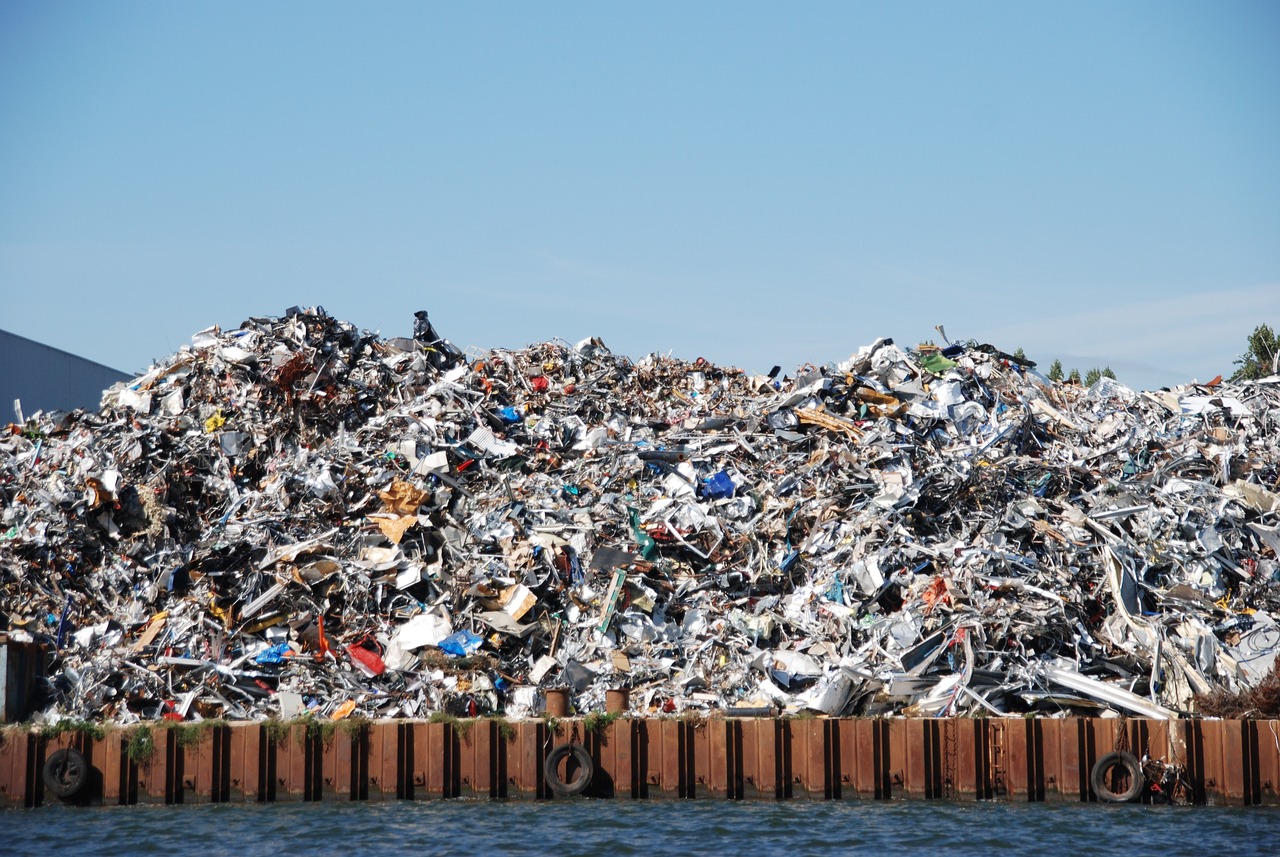
Community Engagement Platforms
In today's fast-paced world, where technology intertwines with our daily lives, community engagement platforms have emerged as a game-changer in waste management. These platforms leverage technology to foster a sense of responsibility among individuals, encouraging them to actively participate in sustainable practices. Imagine a neighborhood where everyone is not only aware of their waste disposal habits but also motivated to improve them. That's the power of technology-driven community engagement!
One of the most significant advantages of these platforms is their ability to provide real-time information to residents. For instance, mobile applications tailored for waste management can offer insights into local recycling guidelines, collection schedules, and even tips for reducing waste. This accessibility empowers individuals to make informed decisions about their waste disposal, creating a ripple effect that can lead to substantial community-wide improvements.
Moreover, these platforms often incorporate gamification elements, which can make waste management feel less like a chore and more like a community challenge. Residents might compete in friendly contests to see who can recycle the most or reduce their waste output the most significantly. Such initiatives not only enhance engagement but also cultivate a stronger sense of community. When people come together for a common cause, it fosters connections and encourages collective responsibility.
Social media also plays a crucial role in this engagement. Campaigns run on platforms like Facebook, Instagram, and Twitter can raise awareness about waste management issues, share success stories, and highlight local events focused on sustainability. These campaigns can reach a wide audience, motivating people to join the movement and take action. For example, a simple post about a community clean-up event can spark interest and lead to a significant turnout, showcasing the power of digital communication.
To further illustrate the impact of community engagement platforms, consider the following table that outlines the benefits of these technologies:
| Benefit | Description |
|---|---|
| Increased Awareness | Residents become more informed about recycling guidelines and waste disposal methods. |
| Enhanced Participation | Encourages community members to take part in local sustainability initiatives. |
| Improved Collaboration | Brings together local organizations and residents to work towards common goals. |
| Real-time Feedback | Provides immediate insights into community waste management practices and areas for improvement. |
Furthermore, these platforms can facilitate feedback mechanisms, allowing residents to voice their concerns or suggestions regarding waste management practices in their area. This two-way communication not only enhances transparency but also builds trust between the community and local authorities. When residents feel heard, they are more likely to engage and contribute positively to their environment.
In conclusion, community engagement platforms are revolutionizing the way we approach waste management. By harnessing technology, these platforms not only educate but also inspire individuals to take action, fostering a culture of sustainability. As we move forward, embracing these innovative solutions will be crucial in building cleaner, greener communities.
- What are community engagement platforms? Community engagement platforms are digital tools that encourage public participation in local initiatives, particularly in waste management.
- How do mobile apps help in waste management? Mobile apps provide users with information about recycling, collection schedules, and tips for reducing waste, promoting sustainable practices.
- Can social media really make a difference? Yes, social media campaigns can raise awareness, share success stories, and motivate community involvement in waste management efforts.
- What role does gamification play in community engagement? Gamification makes participation fun and competitive, encouraging residents to engage in sustainability challenges together.
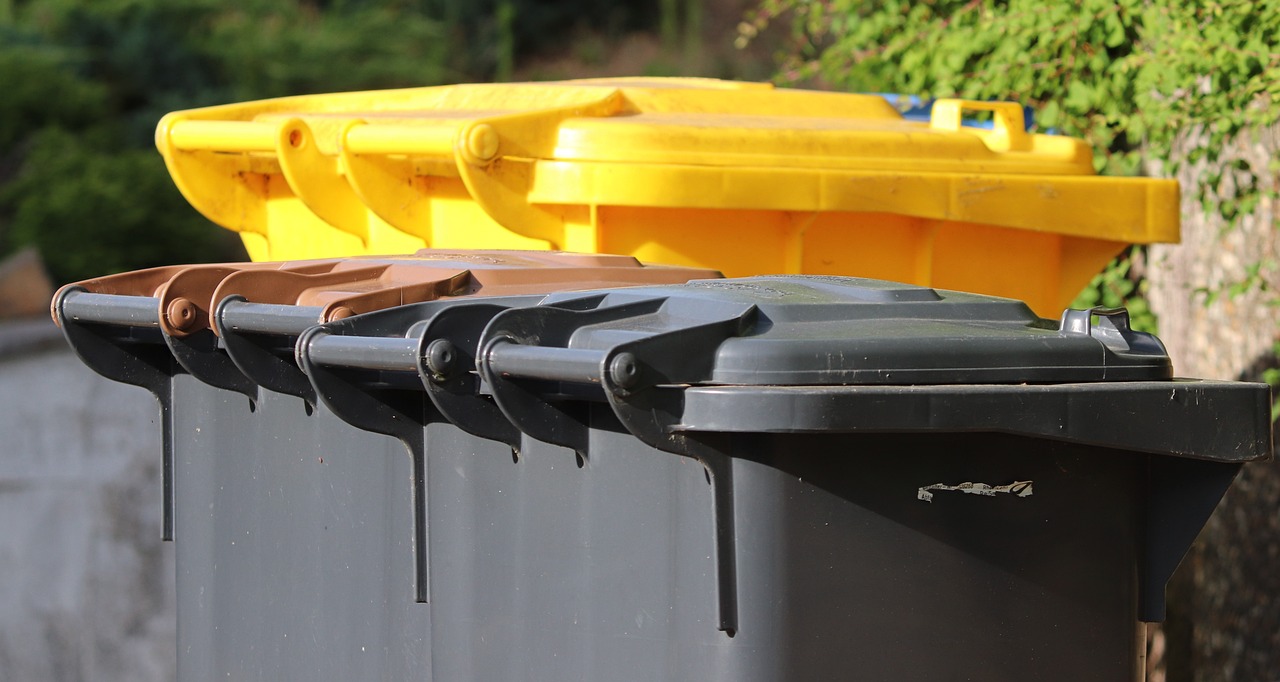
Mobile Apps for Waste Management
In today's fast-paced world, mobile applications have become an integral part of our daily lives, and their role in waste management is no exception. These innovative tools are designed to empower individuals and communities to take charge of their waste, making the process of recycling and disposal more accessible and efficient. Imagine having a personal assistant right in your pocket that not only reminds you of your waste collection schedule but also provides you with tailored recycling guidelines based on your location. Sounds convenient, right?
Mobile apps for waste management serve a multitude of purposes, transforming the way we interact with waste disposal systems. For instance, they offer features such as:
- Local Recycling Guidelines: Users can access specific instructions about what can and cannot be recycled in their area, helping to reduce contamination rates.
- Collection Schedules: These apps provide real-time updates on waste collection times and any changes to the schedule, ensuring that residents are well-informed and reducing the chances of missed pickups.
- Waste Reduction Tips: Many apps include educational resources that promote sustainable practices, encouraging users to reduce their waste footprint.
Moreover, these applications often feature gamification elements that motivate users to engage in responsible waste management practices. For instance, users can earn points or rewards for recycling correctly, which can be redeemed for discounts at local businesses or community events. This not only fosters a sense of community but also makes the process of waste management more enjoyable.
Additionally, mobile apps can facilitate community engagement by allowing users to report issues such as overflowing bins or illegal dumping. This real-time feedback loop helps local authorities address problems more efficiently, leading to cleaner neighborhoods and a more proactive approach to waste management. By harnessing the power of technology, these apps create a platform for citizens to actively participate in their community's waste management efforts.
In conclusion, mobile apps for waste management are changing the game by making waste disposal easier, more efficient, and more engaging for everyone involved. They bridge the gap between local authorities and residents, fostering a culture of sustainability and responsibility. As we continue to embrace technology in our daily lives, these applications will undoubtedly play a crucial role in shaping a cleaner and greener future.
- What are the benefits of using mobile apps for waste management?
Mobile apps provide users with easy access to recycling guidelines, collection schedules, and waste reduction tips, promoting responsible waste disposal and community engagement. - How can I find a waste management app suitable for my area?
Most waste management apps are designed to cater to specific locations. Check your local government website or app store for recommendations tailored to your community. - Are there any costs associated with using these apps?
Many waste management apps are free to download and use, although some may offer premium features for a fee.
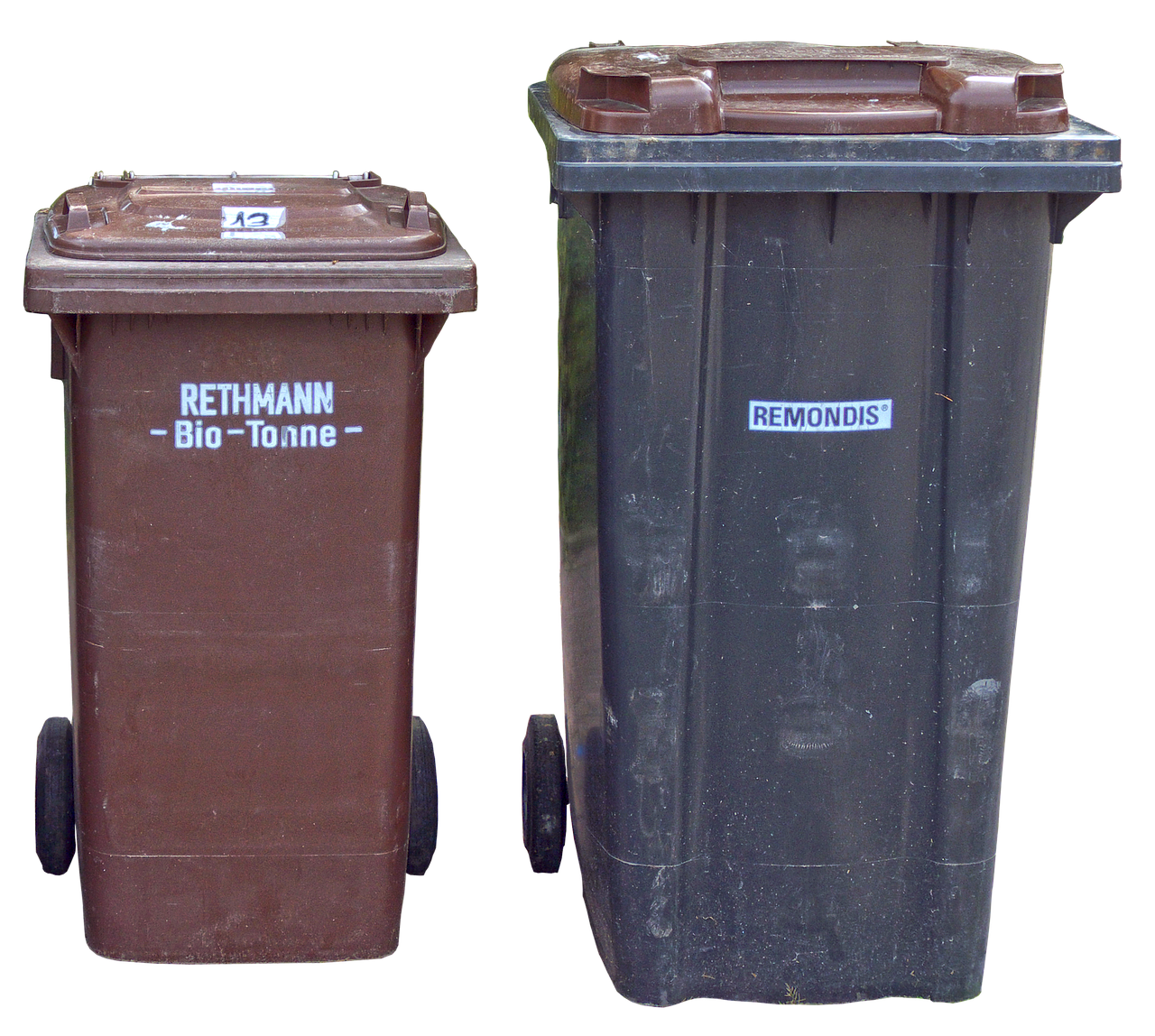
Social Media Campaigns
In today's digital age, social media has emerged as a powerful tool for driving awareness and engagement around waste management issues. These platforms, where billions of people connect and share ideas, provide a unique opportunity to spread the message of sustainability and responsible waste disposal. Imagine scrolling through your feed and coming across a vibrant post about a local cleanup event or an eye-catching infographic that highlights the importance of recycling. This is the magic of social media campaigns—they not only inform but also inspire action.
Social media campaigns can take many forms, from viral challenges encouraging people to reduce their plastic use to educational videos demonstrating proper recycling techniques. One of the most effective strategies is to leverage user-generated content, where community members share their own experiences and initiatives. This creates a sense of belonging and motivation, as people see their peers actively participating in waste reduction efforts. For instance, a campaign might encourage users to post pictures of their recycling bins with the hashtag #RecycleRight, fostering a community of environmentally conscious individuals.
Moreover, social media platforms allow for real-time interaction and feedback, making it easier for organizations to gauge public sentiment and adapt their strategies accordingly. Engaging content, such as polls or quizzes about waste management practices, can not only educate but also entertain, making the learning process enjoyable. The use of visually appealing graphics and videos can significantly increase engagement rates, as studies show that posts with images receive up to 94% more views than those without.
To maximize the impact of these campaigns, it’s essential to target specific demographics and tailor the messaging accordingly. For example, campaigns aimed at younger audiences might focus on trendy eco-friendly products or lifestyle changes, while those targeting older generations could emphasize the long-term benefits of sustainable practices. By understanding the audience's preferences and behaviors, organizations can create more effective and resonant campaigns.
In summary, social media campaigns are a dynamic and engaging way to promote waste management initiatives. By harnessing the power of these platforms, organizations can not only raise awareness but also foster community involvement and inspire collective action towards a more sustainable future.
- What are social media campaigns? Social media campaigns are marketing efforts that use social media platforms to promote a cause, product, or service, often through engaging content and community interaction.
- How can I participate in waste management initiatives through social media? You can participate by sharing your experiences, following relevant organizations, and engaging in campaigns that promote recycling and waste reduction.
- Why are social media campaigns effective for waste management? They are effective because they reach a wide audience, foster community engagement, and allow for real-time interaction and feedback.
- What types of content work best for social media campaigns? Visually appealing graphics, videos, infographics, and user-generated content tend to perform best, as they capture attention and encourage sharing.

Data Analytics in Waste Management
In the rapidly evolving world of waste management, data analytics has emerged as a powerful tool, revolutionizing how organizations and municipalities approach waste disposal and recycling. By leveraging data, waste management systems can gain invaluable insights into waste generation patterns, which ultimately leads to more efficient operations and better environmental outcomes. Imagine trying to navigate through a maze without a map; that’s how waste management used to operate before the advent of data analytics. Now, with the right data, it’s like having a GPS guiding you every step of the way!
One of the most significant advantages of data analytics is its ability to provide a clearer picture of waste generation trends. For instance, cities can analyze historical data to identify peak waste generation periods, allowing them to allocate resources more effectively. This means that during busy times, like holidays or community events, waste collection services can ramp up their operations to meet the increased demand. It’s all about being proactive rather than reactive, and data analytics makes that possible.
Moreover, predictive analytics plays a crucial role in forecasting future waste generation trends. By analyzing patterns from the past, organizations can predict how much waste they will need to manage in the coming weeks or months. This forecasting capability allows for better resource allocation and planning, ensuring that waste collection and processing facilities are adequately prepared. Think of it as preparing for a storm: you wouldn’t wait until the rain starts to gather your supplies; you’d want to be ready beforehand!
Another key aspect of data analytics in waste management is the establishment of performance metrics. These metrics serve as benchmarks for assessing the effectiveness of waste management programs. By measuring factors such as recycling rates, contamination levels, and waste diversion percentages, organizations can identify areas for improvement. If you think about it, it’s like a fitness tracker for waste management—constantly monitoring performance and encouraging positive changes.
To illustrate the impact of data analytics, consider the following table that outlines the benefits of using data analytics in waste management:
| Benefit | Description |
|---|---|
| Improved Efficiency | Data-driven insights lead to optimized collection routes and schedules, reducing operational costs. |
| Enhanced Recycling Rates | Analytics help identify contamination issues, leading to better sorting and higher recycling rates. |
| Informed Decision-Making | Data allows organizations to make evidence-based decisions regarding waste management strategies. |
| Community Engagement | Analytics can help tailor community outreach efforts, improving public participation in recycling programs. |
In conclusion, the integration of data analytics into waste management is not just a trend; it’s a necessity for creating a more sustainable future. By harnessing the power of data, organizations can make informed decisions that lead to improved efficiency, higher recycling rates, and ultimately, a cleaner environment. As we continue to innovate and adapt, the role of data analytics in waste management will only grow, paving the way for smarter, more effective waste management solutions.
- What is data analytics in waste management? Data analytics in waste management involves using data to gain insights into waste generation patterns, optimize operations, and improve recycling efforts.
- How does predictive analytics help in waste management? Predictive analytics forecasts future waste generation trends, enabling better resource allocation and planning for waste collection and processing.
- Why are performance metrics important? Performance metrics help organizations assess the effectiveness of their waste management programs and identify areas for improvement.
- Can data analytics improve recycling rates? Yes, by identifying contamination issues and optimizing sorting processes, data analytics can significantly enhance recycling rates.

Predictive Analytics
Predictive analytics is revolutionizing the waste management sector by providing invaluable insights into waste generation trends. Imagine being able to forecast how much waste your community will produce next month or even next year. This capability allows municipalities and organizations to plan more effectively, ensuring that resources are allocated efficiently and waste collection schedules are optimized. By utilizing historical data and advanced algorithms, predictive analytics can identify patterns and predict future waste generation with remarkable accuracy, making it a game-changer in the quest for sustainability.
One of the key advantages of predictive analytics is its ability to help waste management organizations anticipate peak times for waste generation. For instance, during holidays or special events, waste production can surge dramatically. By analyzing past data, organizations can prepare for these spikes, deploying additional resources to manage the increased load. This not only improves operational efficiency but also enhances the overall effectiveness of waste collection services, ensuring that communities remain clean and waste is disposed of responsibly.
Furthermore, predictive analytics can assist in identifying areas that generate excessive waste, enabling targeted interventions. For example, if data reveals that certain neighborhoods consistently produce more waste than others, waste management authorities can implement tailored educational campaigns or provide additional recycling bins to encourage responsible disposal practices. This proactive approach fosters a culture of sustainability and engages the community in meaningful ways.
To illustrate the impact of predictive analytics on waste management, consider the following table that outlines its benefits and applications:
| Benefit | Application |
|---|---|
| Improved Resource Allocation | Optimizing collection routes and schedules based on predicted waste volumes. |
| Enhanced Community Engagement | Targeted educational campaigns in high waste generation areas. |
| Cost Savings | Reducing operational costs by minimizing unnecessary pickups. |
| Environmental Impact | Lowering carbon footprints by optimizing waste collection efficiency. |
In conclusion, predictive analytics is not just a buzzword; it is a powerful tool that empowers waste management organizations to make data-driven decisions. By leveraging technology to predict waste generation trends, communities can work towards reducing waste, enhancing recycling efforts, and ultimately moving towards a more sustainable future. As we continue to embrace these technological advancements, the landscape of waste management will evolve, leading to cleaner, greener, and more efficient communities.
- What is predictive analytics? Predictive analytics involves using historical data and algorithms to forecast future trends, helping organizations make informed decisions.
- How does predictive analytics benefit waste management? It allows for better resource allocation, anticipates peak waste periods, and helps identify areas for targeted waste reduction efforts.
- Can predictive analytics reduce costs in waste management? Yes, by optimizing collection schedules and routes, organizations can minimize unnecessary pickups and save on operational costs.
- Is predictive analytics easy to implement? While it requires investment in technology and data analysis, the long-term benefits can outweigh the initial challenges.

Performance Metrics
In the realm of waste management, serve as the compass that guides organizations toward enhanced efficiency and effectiveness. These metrics are not just numbers; they are the lifeblood of decision-making processes, enabling waste management companies to assess how well they are doing and where improvements are needed. Imagine navigating a ship without a map; that’s what managing waste without performance metrics feels like. By establishing clear, quantifiable goals, organizations can track their progress and adapt their strategies accordingly.
One of the most critical aspects of performance metrics is their ability to provide insights into various elements of waste management. For instance, metrics can include waste diversion rates, recycling rates, and contamination levels in recyclable materials. By regularly monitoring these indicators, organizations can identify trends and patterns in waste generation and disposal. This data-driven approach allows for targeted interventions, ensuring that resources are allocated effectively. For example, if a city notices a spike in contamination levels, it can implement educational campaigns to inform residents about proper recycling practices.
Moreover, performance metrics can be categorized into different types, each serving a unique purpose. Here’s a quick breakdown:
- Operational Metrics: These focus on the efficiency of waste collection and processing operations, such as the number of collections per route and the average time taken for each collection.
- Financial Metrics: These assess the cost-effectiveness of waste management operations, including cost per ton of waste collected and revenue generated from recycling.
- Environmental Metrics: These evaluate the environmental impact of waste management practices, such as greenhouse gas emissions reduction and landfill diversion rates.
To illustrate how these metrics can be effectively utilized, consider the following table that outlines sample performance metrics for a waste management organization:
| Metric Type | Specific Metric | Purpose |
|---|---|---|
| Operational | Collection Frequency | Tracks how often waste is collected from different neighborhoods. |
| Financial | Cost per Ton | Measures the cost-effectiveness of waste collection and processing. |
| Environmental | Recycling Rate | Indicates the percentage of waste that is recycled versus sent to landfill. |
By utilizing these metrics, waste management organizations can not only enhance their operational efficiency but also foster transparency and accountability. Stakeholders, including local governments and community members, can access this data, creating a culture of trust and collaboration. After all, when communities are informed about their waste management performance, they are more likely to engage in sustainable practices.
In conclusion, performance metrics are vital tools that empower waste management organizations to operate more effectively. By leveraging data analytics to track and analyze these metrics, organizations can continuously improve their services, promote sustainability, and ultimately contribute to a cleaner, greener planet. So, the next time you throw something away, remember that behind the scenes, a complex web of metrics is working tirelessly to ensure that waste is managed responsibly.
Q1: What are performance metrics in waste management?
A1: Performance metrics in waste management are quantifiable measures that help organizations assess the effectiveness and efficiency of their waste management practices.
Q2: Why are performance metrics important?
A2: They are important because they provide insights into operational efficiency, financial effectiveness, and environmental impact, allowing organizations to make informed decisions and improve their strategies.
Q3: How can communities benefit from performance metrics?
A3: Communities benefit from performance metrics as they promote transparency and accountability, encouraging public participation and fostering a culture of sustainability.
Q4: Can performance metrics lead to cost savings?
A4: Yes, by identifying inefficiencies and optimizing operations, performance metrics can lead to significant cost savings in waste management.
Frequently Asked Questions
- How does technology improve waste collection efficiency?
Technology enhances waste collection efficiency through smart waste collection systems that utilize sensors and IoT technology. These systems optimize collection routes, reduce operational costs, and minimize environmental impacts by making data-driven decisions. Imagine a garbage truck that knows the best path to take, avoiding traffic and reducing fuel consumption!
- What role does AI play in waste sorting?
AI significantly improves waste sorting accuracy by enabling machines to identify and separate recyclables from waste more effectively than humans. With advanced machine learning algorithms, these systems learn from waste patterns over time, adapting to changes and improving resource recovery. It's like having a super-smart assistant that never gets tired!
- Can blockchain technology enhance transparency in waste management?
Absolutely! Blockchain provides a secure and immutable record of waste disposal and recycling activities. This fosters accountability among stakeholders, ensuring that everyone involved in waste management is transparent about their actions. Think of it as a digital ledger that keeps everyone honest!
- What are waste-to-energy technologies?
Waste-to-energy technologies convert non-recyclable waste into usable energy, thus reducing landfill use and generating renewable energy. This process not only helps in waste disposal but also contributes to a circular economy by turning trash into treasure!
- How do community engagement platforms impact waste management?
Technology-driven community engagement platforms encourage public participation in waste management initiatives. They promote recycling and responsible waste disposal through education and incentives, making communities more aware and proactive in their waste management efforts. It's like rallying the neighborhood to work together for a cleaner environment!
- What is the significance of data analytics in waste management?
Data analytics provides insights into waste generation patterns, helping cities and organizations make informed decisions to optimize their waste strategies. By using predictive analytics, waste management can forecast trends and allocate resources more effectively, ensuring that they're ready for whatever waste comes their way!



















